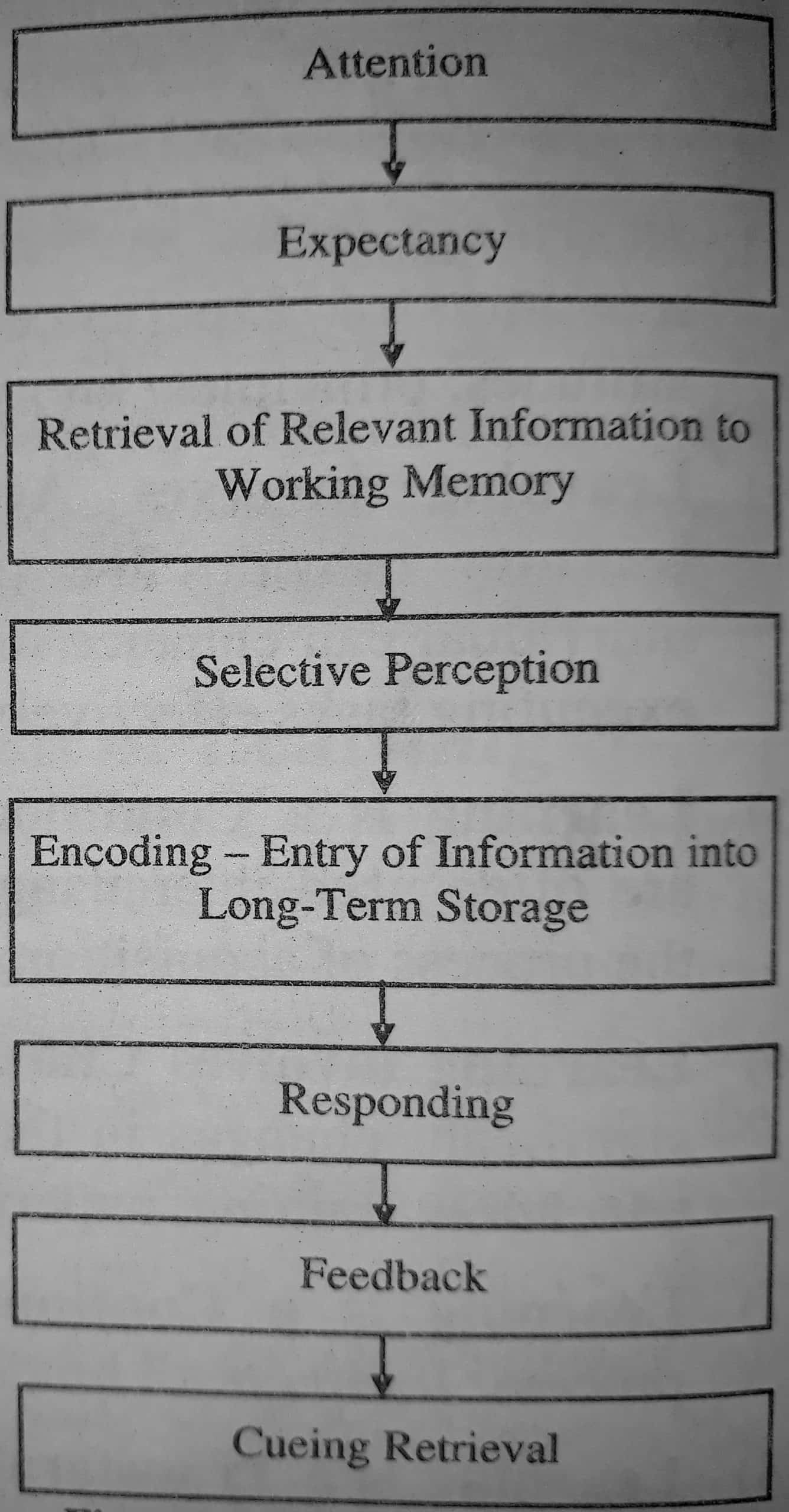The process of learning involves various phases, as shown in the figure given below:
Phase 1: Attention
Where attention is absent, learning ceases to exist. Attention is mandatory for bringing information into active memory and keeping it alive.
So, in the first place, the learning process helps the learner to target his attention on the actions of learning.
However, this should not be limited to the first phase only, as attention must be sustained throughout the entire process of learning.
Phase 2: Expectancy
In this phase, due to the planned process of learning, the learner looks forward to something good happening.
This results in the origination of various inspirational ideas to devote oneself to the consequential phases of learning.
Phase 3: Retrieval of Relevant Information to a Working Memory
Through this phase, the learner fetches the structures from the long-term memory, which is essential for gaining new information or finding solutions to problems.
Phase 4: Selective Perception
In this phase, the learner usually focuses on the main instructions highlighted in the presentation.
It is impossible for the teachers to analyze the attention of students by mere inspection, which ultimately results in the learner’s inability to learn due to their incorrect attention.
Selective perception fails either due to the inadequacy on the part of a presentation to draw attention or the learner fails to apply attention or due to both of these factors.
Phase 5: Encoding – Entry of Information into Long-Term Storage
In this phase, the learner usually conceals the facts on which he or she has applied attention beforehand, i.e., there is a transfer of facts into the lasting memory where the individual establishes an association with the already stored facts.
Phase 6: Responding
In this phase, the learner recollects the facts that have been accumulated in the lasting memory and keenly applies them in his tasks. The learner’s proper execution of work shows that his learning process is correct.
Phase 7: Feedback
In this phase, the learner primarily figures out the extent of work satisfaction through the attainment of knowledge during the previous phase.
When the outcome of the feedback indicates the positivity of the performance, it serves as an encouragement to the learner.
When this feedback points out the flaws in the learner’s performance, he again returns to the earlier phase of learning to rectify them for future actions.
For example, the learner can go back and retrospectively attain the mandatory knowledge or apply his focus more efficiently during selective observation and augment with new zeal and enthusiasm.
The learner can proceed again for die future course of action in the consequent phases. The learner cannot proceed toward the next step unless and until the information has been acquired to his satisfaction.
Phase 8: Cueing Retrieval
In this phase, the learner usually recalls or applies the facts which he has learned in the initial stages. Then, he focuses on the preservation of the facts or the simple application of knowledge.
